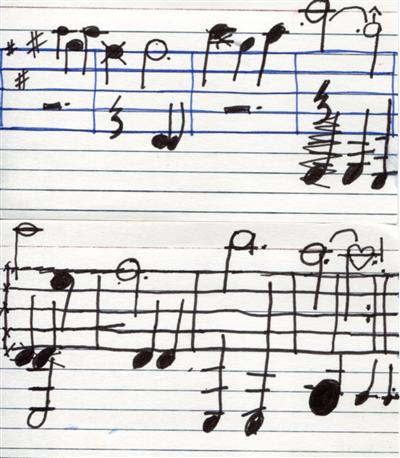This post is a little bit retro, so bear with me. In the Suzuki-guitar Facebook group, a teacher asked for suggestions to give to a parent whose child has a hard time learning the song names in Book 1.
This was hard for me and M, and I came up with a unique solution that I thought I’d share. For each song, I figured out some singable, distinctive piece of the melody, then I recorded very short snippets of myself singing the song’s name to that melody. Next, I burned a custom audio CD of the Book 1 songs featuring my singing before each song. Thus, for instance, before the actual Song of the Wind, you would hear me singing, ‘Ba-da-ba-ba, Ba-da-ba-ba, So-ong of the Wind.”
Some disclaimers:
- I sang the name of “Rigadoon” as “Rigadon” (i.e., “on” not “oon”) because the CD jacket or the book (I forget which) has it spelled that way. But I later learned that everyone says “Rigadoon.”
- Ideally, the volume on these should be a hair lower to balance better with the songs. But we lived with it. You could reduce the volume yourself in an audio editor like Audacity.
- I recorded the singing in Audacity with a crummy headset mike, and I’m not the world’s best singer, so these song intros are not high art. But I can keep a tune, and after hearing these intros many times, everyone in the family (including my wife, who is not the Suzuki parent) knows the names of the Book 1 songs.
I’ve put the audio files below in a browser-based player. To listen to or download an individual file:
- Click a song’s name in the playlist.
- The song will load in the player and will soon start playing. You should see the words “Download MP3” under the song name.
- Right-click “Download MP3” and save the file to your computer.
